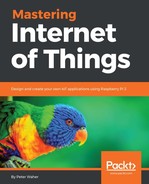We are now ready to define ownership of information, in a congruent manner. The cornerstone of defining ownership of information is using decentralization of storage and processing of the information as the principal method. This is in stark contrast to centralized storage and processing, as defined in big data.
Decentralization of processing permits you to demonstrate your ownership of the decentralized information, as follows:
- If the data is only available in your device, it can be protected behind lock and key
- If the communication infrastructure properly authenticates identities of participants, authorization can be used to limit access based on trust
- Propagation of presence of all participants to approved subscribers in the network allows you to easily monitor your devices
- Registration of ownership claims of devices in a Thing Registry allows for verification of ownership
All the requirements for being able to control ownership of data is possible if an infrastructure based on XMPP is used. XMPP furthermore has the benefit of being standardized, and therefore interoperable. Of the protocols presented in this book, it is the only protocol with these properties. Ownership is enforced in XMPP by the following:
- Protection under lock and key are solved in XMPP using authentication and encryption.
- Trust is modeled using presence subscriptions.
- Limiting access can be done manually, or automatically, using a method called provisioning. We will discuss provisioning in more depth in this chapter.
- Monitoring of your devices is done using presence.
- Registration and discovery is performed in Thing Registries, as described in the previous chapter.
